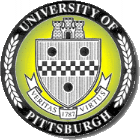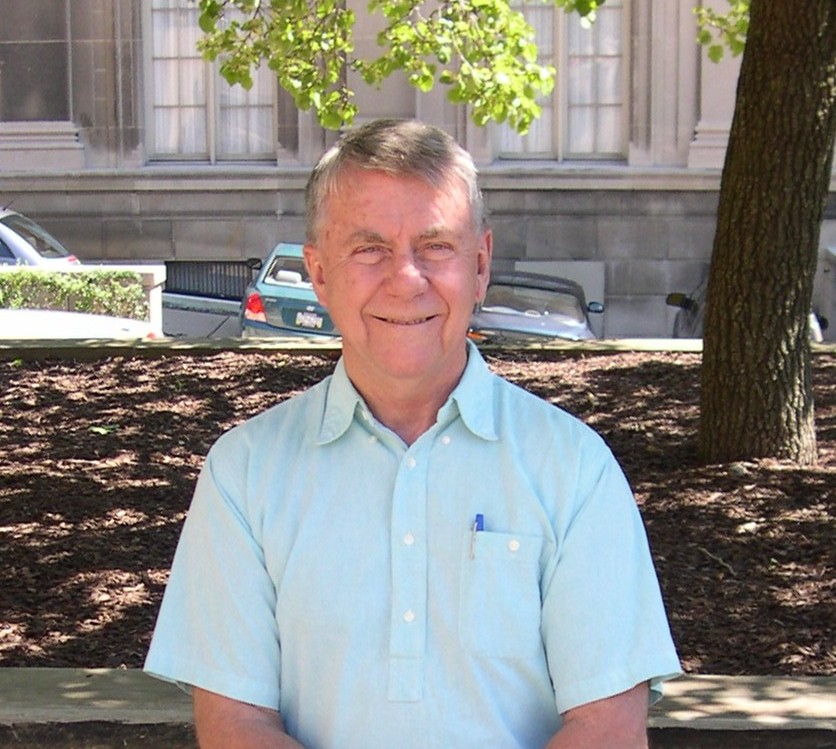

 |
 |
|
|
|
|
|
 |
Department of Chemistry
Chevron Science Center 219 Parkman Avenue Pittsburgh, PA 15260
|
|
|
Chemical Reactivity, Especially of Biologically Relevant Systems, as Probed by High Resolution Electronic Spectroscopy in the Gas Phase
|
|||
| Structure dictates function. Nowhere is this more apparent than in
biological systems. An enzyme functions in the way that it does because of
the three-dimensional arrangement of atoms or groups of atoms in its
vicinity. Much of our current understanding of the molecular basis of life
is based in large part on recent determinations of the structures of
proteins by X-ray crystallography and NMR techniques. Knowing how proteins
are constructed has given us much insight into how they form, how they
function, and how they evolve in time. Our own goals are no less ambitious. We develop new high resolution spectroscopic techniques for the determination of the structures of molecules and their assemblies. A recent example is rotationally resolved electronic spectroscopy in molecular beams, in which the resolution approaches 1 part in 109. We use this technique to determine the moments of inertia of isolated molecules and complexes, from which we obtain information about their three-dimensional structures. We also use this technique to determine how the structures change when they absorb light, thereby modeling chemical reactions. We ask, and answer, questions such as: What kind of interactions exist between two or more species to promote their assembly? How do the electronic charge distributions of the species interact? How are the structures of the individual species modified when they interact? Do they react? Why? And how do the answers to these questions depend upon the relative orientations of the constituents? In recent work, we have shown how the electronic distributions of two atoms change when they are brought together to form a diatomic molecule, how a solute molecule is distorted towards a zwitterionic form when a solvent molecule is attached, how the motion of a molecule in free space is affected when it is weakly bound to a surface, how the lone pairs of a Lewis base orient themselves towards an acid in a proton-transfer (neutralization) reaction, initiated by light, and how the vibrational motions of a molecule are affected by neighboring molecules, with which only weak, van der Waals forces exist. Our future work will continue to focus on these questions. We plan to study the geometric constraints on intramolecular excimer formation, hydrogen atom transfer, and "water-assisted" tautomerization reactions. We are designing gas-phase mimics of function in several biological systems, such as the catalytic triad in chymotrypsin. And we are developing new techniques for the study of analogous processes in the condensed phase, including a near-field scanning optical microscope that will employ a new CW laser as the light source. Awards Pittsburgh Award of the American Chemical Society, 2005; Chancellor's Distinguished Research Award, 2001; Earle K. Plyler Award, 1999; Fellow of Exeter College, Oxford, 1996; Chancellor's Distinguished Teaching Award, 1994; AAAS Fellow, 1993; Fellow of the APS, 1990; JSPS Fellow, 1988; Guggenheim Fellow, 1985; Fulbright Fellow, 1979 Biography David Pratt was born in Providence, RI in 1937. After periods of residence in Princeton, NJ, Washington, DC, New York, NY, and Bloomington, IN, he received his A.B. from Princeton University in 1959, served three years in the U.S. Navy in 1959-62, received his Ph.D. from the University of California, Berkeley in 1967, working with Rollie Myers in the Department of Chemistry, and did postdoctoral work at UC, Santa Barbara in 1967-8, working with Herb Broida in the Department of Physics. He joined the faculty at the University of Pittsburgh in 1968 and was promoted to Professor of Chemistry in 1978. At Pitt, David’s research program in high resolution laser spectroscopy is currently supported by NSF; NSF also supports a collaboration with Brooks Pate at the University of Virginia for the development of chirped pulse microwave techniques for the study of biological molecules in the gas phase. David is currently co-Vice Chair (with Joan-Emma Shea) of the Gordon Research Conference on Biomolecules in the Gas Phase. At Pitt, David currently teaches in the General Chemistry program and is also active in the development of integrated science courses for undergraduate students in the humanities and social sciences with several other colleagues. Developing such courses for “mainstream” science majors is a challenge for the future. Married to Kathleen Cummings, the father of two children, Susan and Jon, and a recent grandfather of Jake and Angus, Dr. Pratt resides in Pittsburgh where he plays an occasional game of racquetball. Other leisure-time activities include biking, hiking, rowing, canoeing, and sailing, as often as possible near a family cottage in Maine.
|
|||
This site was last updated 07/15/09